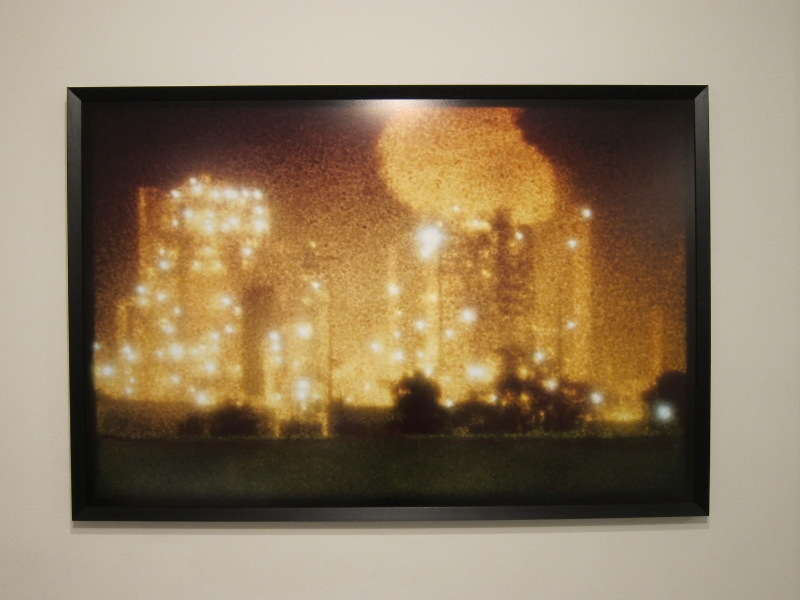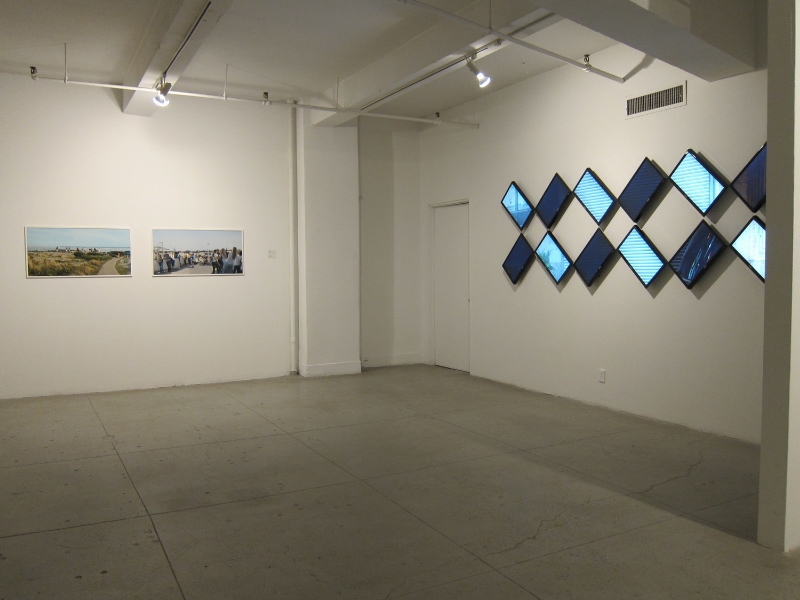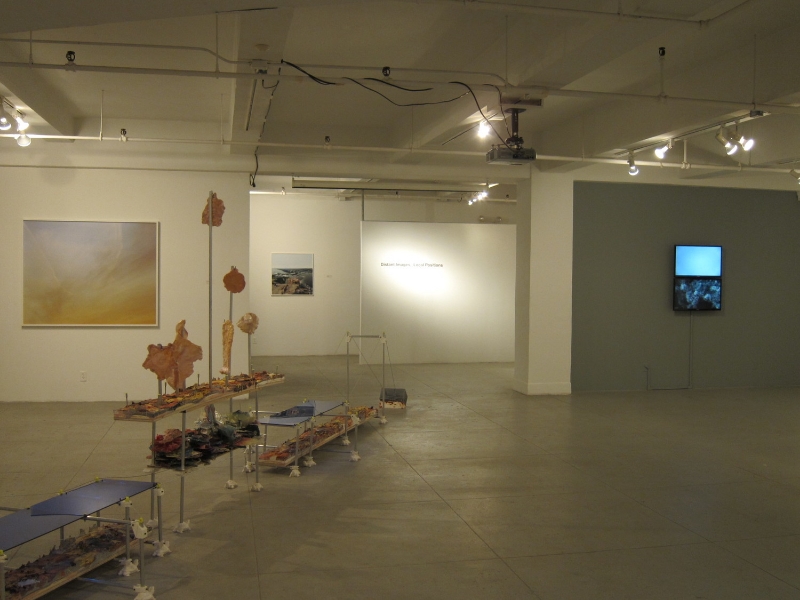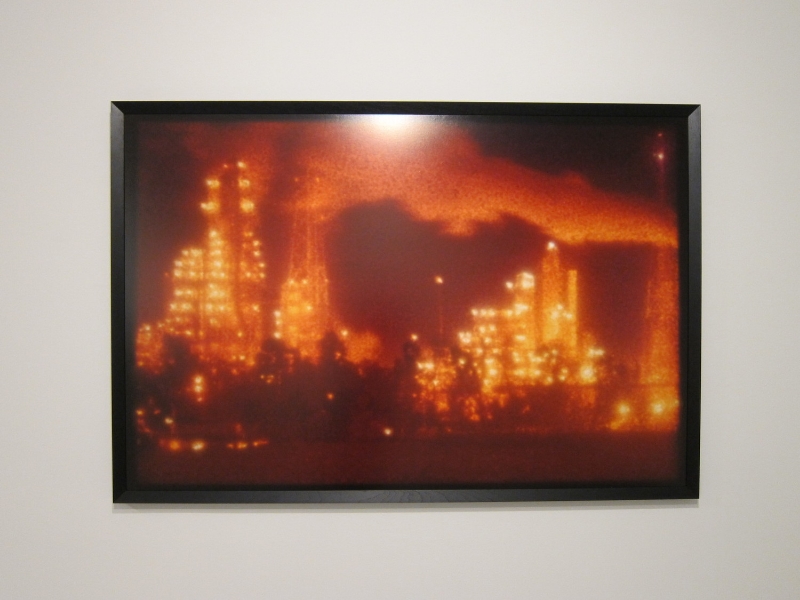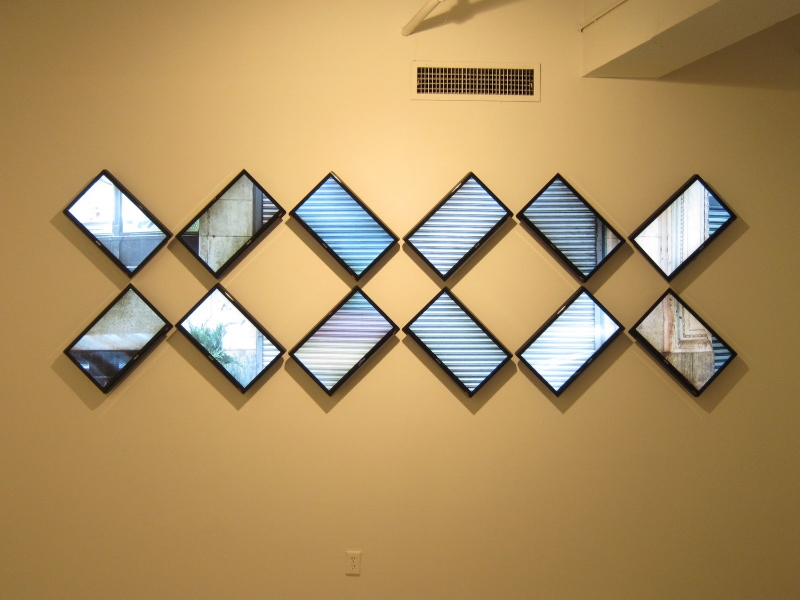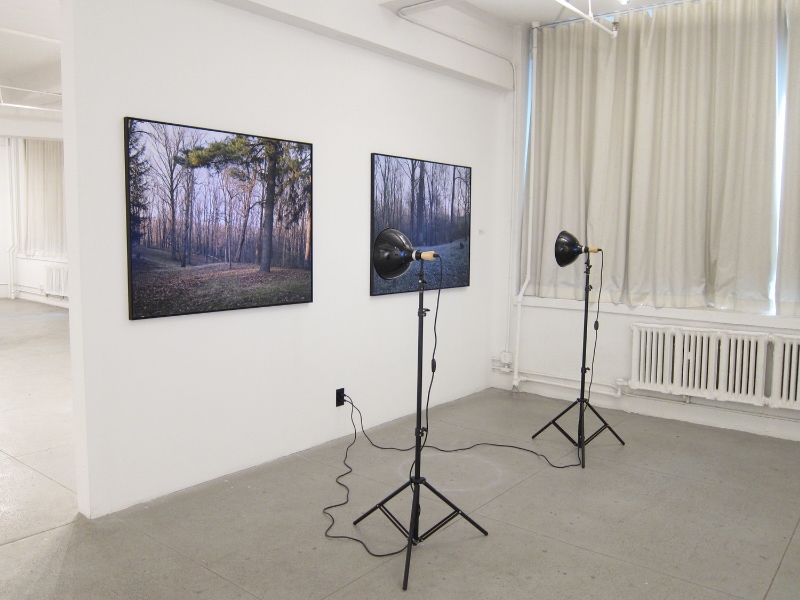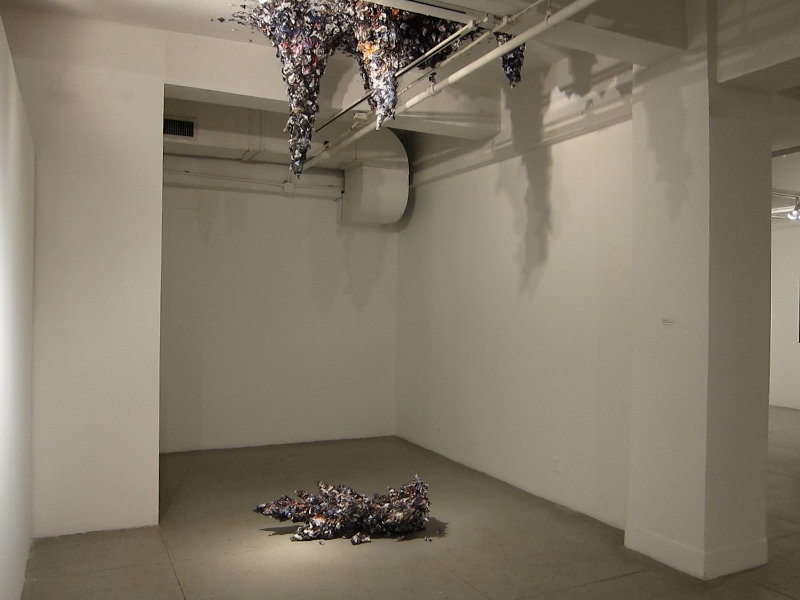Distant Images, Local Positions
January 24—March 8, 2014
Curated by Wafaa Bilal
Haseeb Ahmed & Daniel Baird
Hasan Elahi
AnnieLaurie Erickson
Regina Mamou
Mary Mattingly
Trevor Paglen
Travis LeRoy Southworth
Scott Patrick Wiener
What controls geography? Photographs, ultimately and they do so without neutrality. Our understanding of geography from afar is constructed in a fragmented and subjective way, via photographic imagery. This gives the impression of closeness, but the illusion alienates both the place being seen and the viewer. As a result, we become complacent in the universe of appearances, comforted by the knowledge that what is depicted is now known. But the camera can only show us an apparition, not an actual place. Both the technology and the resulting images are mobile–shot and sent out through various media so that the represented geographies are totally unstable, despite our culture’s desperation to fix them as fact to paper, screens, and the like. Using technological imagery as their point of departure, the artists here propose unstable positions that question and subvert the photographic construction of visual power.
In Has the World Already Been Made? (2012) Ahmed and Baird act as archaeological conservators and use sculptural means to produce molds (negatives) that result in a fragmented installation of casts (positives) to bring together geographically disparate locations in one space. Many of the resulting forms are recognizable, some not, but all carry with them a mark of familiarity that is difficult to shake free. Elahi’s video installation Concordance (scheduled for January 2014), which he produced for this exhibition, examines how the genre of landscape has evolved in a post-9/11 world where the subject is unsure whether or not they are the watched or the watcher. Erickson’s Slow Light series (2013-Present) addresses the phenomenon of afterimages by using cameras equipped with handmade artificial retinas. These images focus on the oil refineries of Louisiana, transforming ubiquitous yet forbidden landmarks into ghostly, mysterious constellations of light. For the installation Proposed Vortex (2013) Mamou uses photographic practices to explore the visual appropriation of metaphysical space by those that would use it to fulfill their own spiritual desires. In After Candide (2008-11) Mattingly photographs tourist activities then digitally combines them with collected images of disaster sites masquerading as industrial landscapes. Southworth is another story, so to speak. In recent sculptural works on boredom he calls “spitwad stalactites” (2009-Present) various magazines are wadded up and spat at walls and ceilings. In The Deep Empty (scheduled for January 2014), an installation produced for this show, he brings together many places by using his body as material to transform pages from the popular magazine National Geographic into a grotto-like installation. Paglen’s ongoing Untitled (Drones) series uses the fact of machinic vision by airborne military surveillance technologies as his subject. There is power play in this—by staring at these “seeing-machines” against the stillness of color fields, one recognizes the 21st century aesthetic condition of perpetual seeing and being-seen. For the ongoing project Landscape Acquisition (2012-Present), Wiener combines manipulated images from the history of military surveillance with radio-controlled (RC) drone technology to survey picturesque landscapes.
EVENTS
Saturday, February 8th, 2:00PM
All Watched Over By Machines of Loving Grace (2011) at Spectacle Theater
Thursday, February 20th, 6:30PM
Boredernity: Part I of... with Travis LeRoy Southworth
Thursday, March 6th, 6:30PM
"Tracking Transience" Lecture with Hasan Elahi
AnnieLaurie Erickson, 29°59'23.45"N, 90°25'19.35"W (Norco), 2013.



